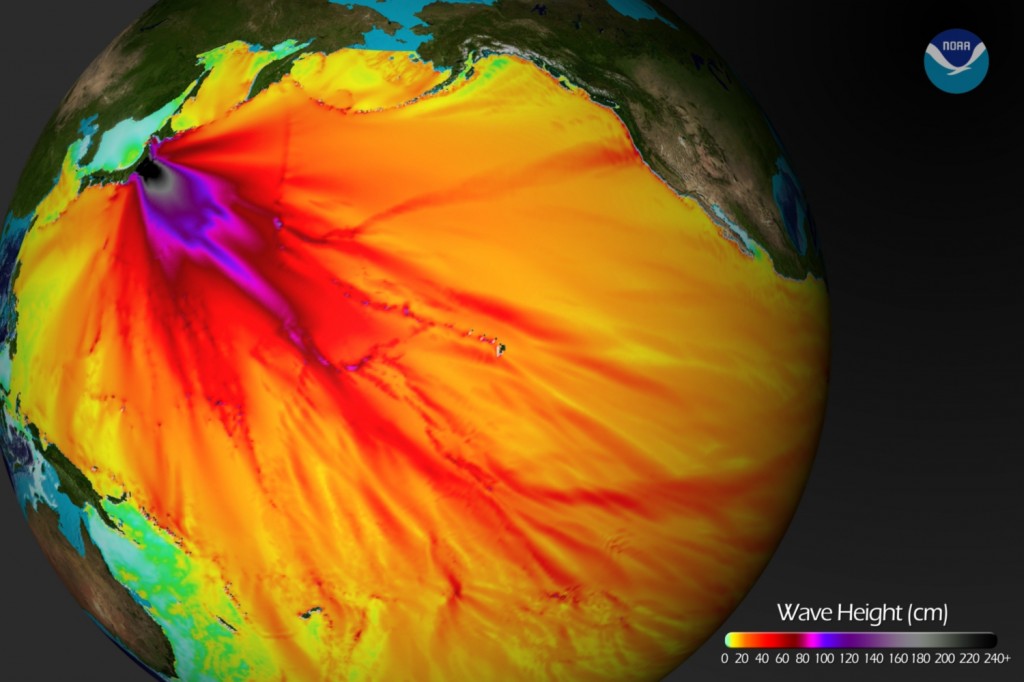11 March 2011
Tsunami Wave Height Map from NOAA
Posted by Dan Satterfield

Model projections of wave heights from the Japan quake on Friday. Image from NOAA. Click image for higher resolution.
My fellow AGU bloggers have some really good info on the science behind the quake here. In particular, Callan Bentley’s Mountain Beltway and Dave Petley’s Landslide Blog.
My Seismograph Story
While at university in the late 1970’s, I worked at a seismic observatory in Oklahoma for a summer. It was a very fascinating experience and has turned out to be very helpful in my job as a meteorologist working in TV (News folks always find the weather guy when there’s been a quake).
It amazed me that a little instrument on a hill in Oklahoma could see an earthquake on the other side of the world. I learned this lesson in a memorable way when adding ink to the pen making the trace on the drum. The needle suddenly pegged all the way to the right, and I was convinced that I’d messed up a very expensive instrument. A few seconds later, it suddenly pegged on the other side and I was certain it was my fault.
I called in my boss, and with a sheepish look on my face told him I’d inadvertently done something wrong. He took one look at it and said “It’s not you, that’s a big quake.” Hours later I heard about a large quake in Asia on the network newscast. That instrument had told me something the rest of the world would not know for hours…
WHY THEY TRAVEL SO FAST
The speed of an ocean wave is determined by this equation Velocity=Wavelength/Period. For a typical tsunami (technical term is seismic sea wave) the wavelength (distance from one crest to the next) is around 500 kilometers! The period (time from one crest to the next) can be over an hour. Plug in the numbers and you get velocities on the order of 1000km/hr!
The height of the wave depends on the depth of the water. In water that is over 1000 meters deep, the wave will be a few inches. When it arrives in shallower water, the height grows rapidly. Some of the waves that hit Japan may have been over 10 meters high.


 Dan Satterfield has worked as an on air meteorologist for 32 years in Oklahoma, Florida and Alabama. Forecasting weather is Dan's job, but all of Earth Science is his passion. This journal is where Dan writes about things he has too little time for on air. Dan blogs about peer-reviewed Earth science for Junior High level audiences and up.
Dan Satterfield has worked as an on air meteorologist for 32 years in Oklahoma, Florida and Alabama. Forecasting weather is Dan's job, but all of Earth Science is his passion. This journal is where Dan writes about things he has too little time for on air. Dan blogs about peer-reviewed Earth science for Junior High level audiences and up.